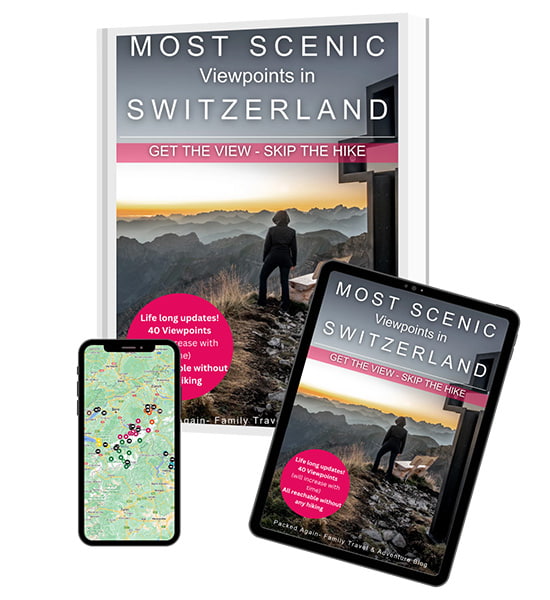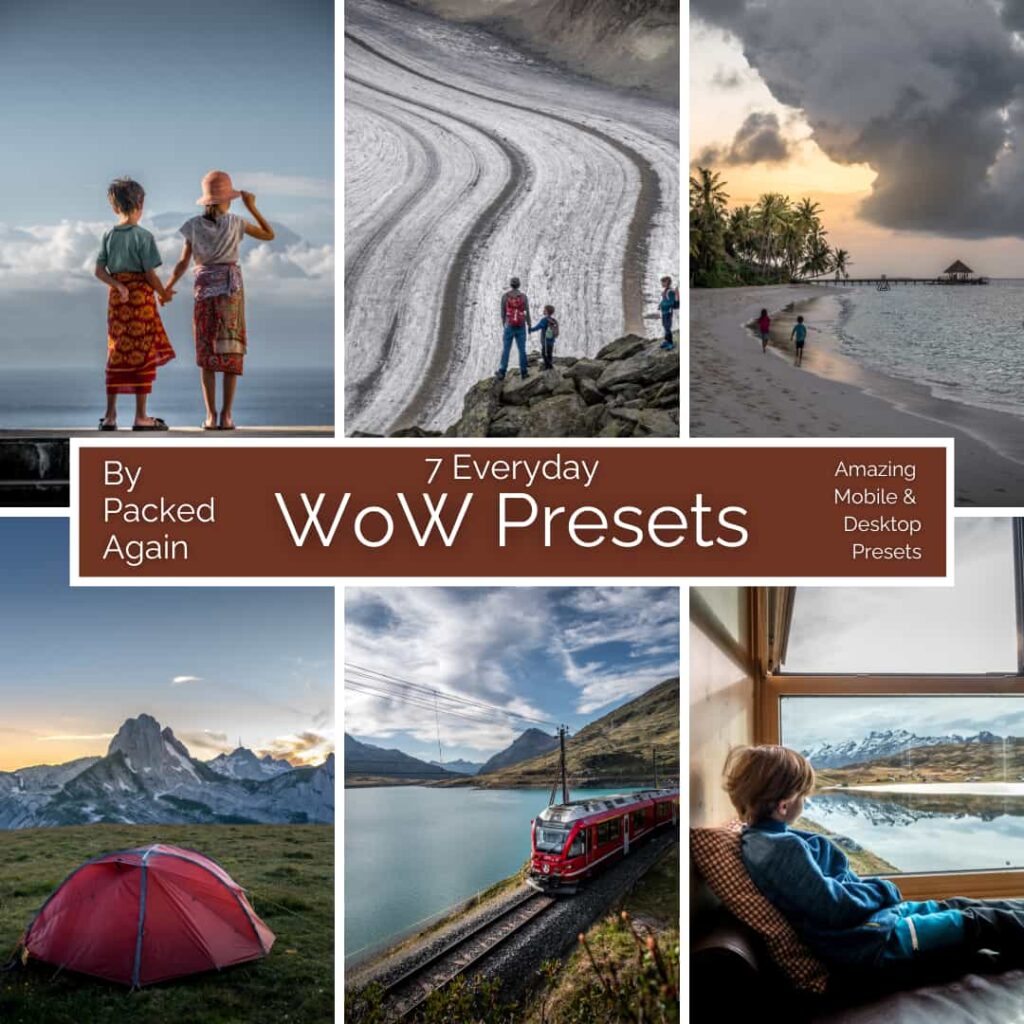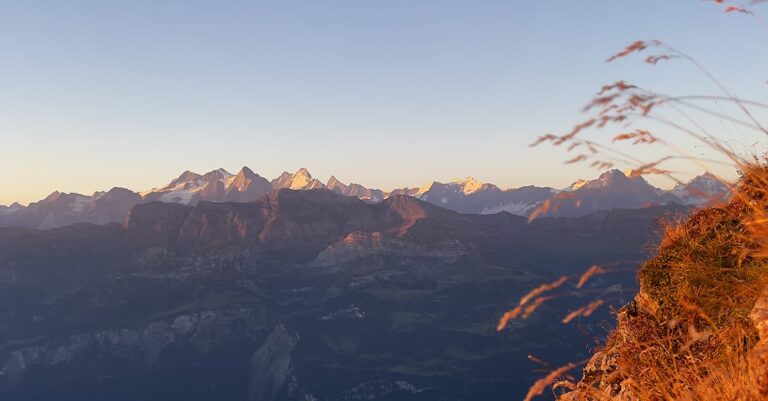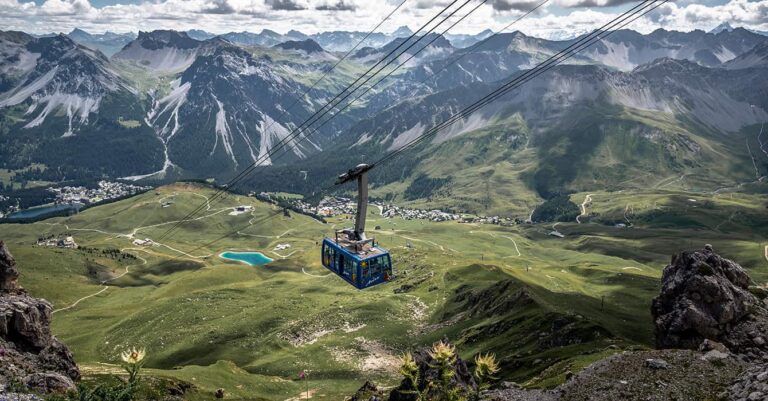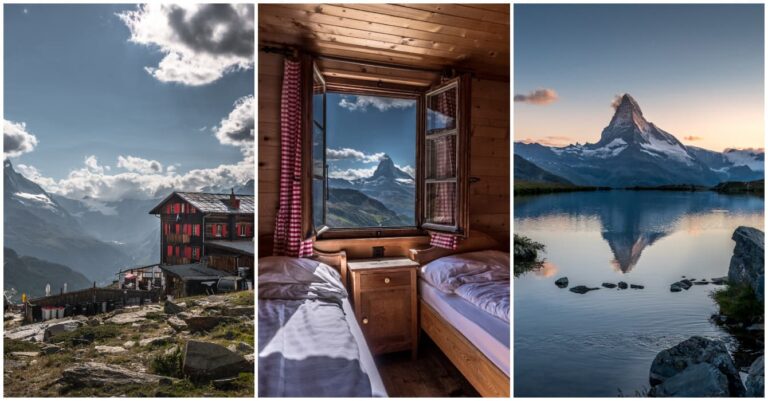Are you wondering if Lofoten in October is worth a visit? Or maybe you’re considering November? Before you decide, let’s ask a few key questions.
Are you hoping to catch the mesmerising midnight sun in Lofoten, or perhaps your dream is to hunt for the Northern Lights? Or, maybe your main goal is to explore as many breathtaking hiking trails in Lofoten as possible.
While visiting Lofoten in October is possible, you won’t experience the midnight sun. This natural wonder graces the islands only during the summer months, from late June to August. However, October offers something equally magical – the chance to witness the Northern Lights. With clear skies, it’s one of the best months for Aurora Borealis sightings.
List of Contents
- 1 What to Expect When Visiting Lofoten in October
- 2 Positives vs Negatives When Visiting Lofoten in October
- 3 Where to Stay in Lofoten
- 4 Car Rental or Campervan for Your Lofoten Adventure
- 5 What to Pack When Visiting Lofoten in October
- 6 Aurora Borealis App
- 7 The Truth About the Northern Lights
- 8 Weather App for Lofoten
- 9 FAQ
- 10 Is Lofoten worth visiting in October?
- 11 What is the best time to visit Lofoten?
- 12 Is October a rainy season in Norway?
- 13 Does it snow in Lofoten in October?
- 14 How many days do you need in Lofoten?
- 15 Is Tromsø or Lofoten better for the Northern Lights?
- 16 How cold is Norway in October?
- 17 Conclusion on whether you should visit Lofoten in October
- 18 More Nordic Travel Guides
Also read this Guide to visit Lofoten before you go
No time to read whether Lofoten in October is a good time? Don’t worry just Pin it for later.


What to Expect When Visiting Lofoten in October
If you ask locals, most would agree that October and November are typically the wettest months across Norway. And if you Google “What’s the best month to visit Lofoten?” October may not always top the list. But don’t let this discourage you!
One of the perks of traveling to Lofoten in October is the smaller crowds. Fewer tourists mean more space to enjoy the beauty of the islands – something we found particularly appealing when booking our trip. It’s the perfect time for a quieter Lofoten road trip, where you can savour the stunning landscapes without the usual hustle and bustle.
Weather in Lofoten can be unpredictable, especially this far north. It’s not unusual to experience all four seasons in a single day, so be prepared for sudden changes. But with a little flexibility in your plans, you can still have an unforgettable experience. Sometimes, you’ll be lucky enough to enjoy a stunning autumn in Lofoten, with vibrant colours and crisp, fresh air.
We visited Iceland in October and had a fantastic time, and we expected Lofoten to offer a similar adventure. Just keep in mind that conditions can change quickly, so it’s wise to have a few good books or games on hand in case a storm rolls in.
If you’re flexible with your itinerary and open to changing plans on the fly, then Lofoten in October can be a truly rewarding experience. Whether you’re hiking in Lofoten’s rugged terrain, chasing the Northern Lights, or simply soaking in the dramatic landscapes, October offers a unique, peaceful charm you won’t find during peak season.

Positives vs Negatives When Visiting Lofoten in October
Empty Hiking Trails (+)
One of the biggest advantages of visiting Lofoten in October is the serene solitude you’ll experience on the hiking trails. During our trip in October 2024, we hardly encountered any tourists and had the two hikes we completed all to ourselves. If you’ve ever been to popular hiking spots in Lofoten, you know how crowded some trails can get, where you end up hiking in a queue up the mountain. In October, you’ll get to enjoy the trails in peace, surrounded by nature, without the crowds.
Closed Hiking Trails (-)
On the flip side, not all hiking trails will be accessible in October. Some of the most popular hikes in Lofoten, like Reinebringen or Ryten, may be closed or unsafe to hike due to weather conditions. Strong winds, heavy rain, or even early snowfall can make certain trails dangerous. We had planned to do the Ryten hike and take in the stunning views of Kvalvika Beach, but the weather simply didn’t cooperate. Were we disappointed? Of course, we were! But such is the reality of traveling to Lofoten in October. Sometimes, Mother Nature has other plans.

Empty Roads (+)
Another big plus is the emptiness of the roads. A Lofoten road trip in October means you can cruise through the islands on nearly empty roads. No rush hour traffic, no searching for parking – it’s a dream for anyone who enjoys the freedom of the open road. You can easily park right by the trailhead or viewpoint, without the stress of crowded parking lots or endless searching for a free space.
Congested Roads and No Parking (-)
In contrast, during the summer months, Lofoten can become quite congested. Thanks to social media’s growing influence, more and more tourists are flocking to the islands each year. One of the locals told us that a journey that would typically take 20 minutes might stretch to two hours, as narrow roads become packed with cars, campervans, and coaches. And when you see how small the roads are within the villages, I can see the chaos with closed eyes.
The roads in Lofoten are often so narrow that it’s a tight squeeze for two cars to pass. Add hundreds of tourists, all trying to find parking at popular spots, and you get a situation that’s more chaotic than peaceful.

Choice of Accommodation (+)
One major perk of visiting Lofoten in October is the wide variety of accommodation options available. During the shoulder season or winter months, you’ll find plenty of space in hotels, guesthouses, and Rorbu (traditional fishing cabins). Unlike in peak summer, you don’t have to book a year in advance. And the best part? You might just snag a spot in that beautiful Rorbu cabin you’ve seen all over Instagram!
However, while there’s more availability, camping during October can be challenging due to the weather. As beautiful as it is, the weather can be harsh and unpredictable, making camping less appealing for some. We personally opted against campervans because of the possibility of rain and the challenge of drying wet clothes. If you’re traveling with kids, keeping four wet jackets and muddy boots dry in a small campervan can be a real headache.
Overcrowded Campsites and No Accommodation (-)
This isn’t unique to Lofoten – it’s a common issue around the world. During peak seasons, booking accommodation in advance is essential. Otherwise, you might find yourself with limited options, and you won’t be able to freely move between campsites due to space restrictions. Plus, you can’t just park your campervan anywhere – wild camping is allowed but there are strict rules. So, if you’re visiting during the height of the season, make sure to book your stay well in advance to avoid the stress of finding accommodation on the fly.

Where to Stay in Lofoten
When planning your Lofoten road trip, it’s often easiest to book your accommodation first and then plan your daily activities based on where you’ll be staying. Fortunately, traveling in the off-season, like in October, gives you plenty of accommodation options and often the flexibility to book last minute.
Lofoten is quite long, and the weather can vary significantly between the southern village of Å and the northern town of Svolvær. Driving from Svolvær to Å takes around 2.5 hours, but during peak season, this journey could easily take much longer due to traffic and narrow roads.
Here’s where we stayed during our trip:
- 2 nights around Svolvær
- 3 nights around Ballstad
- 2 nights around Reinefjord Sjøhus
- One night close to the airport in Narvik on both arrival and departure days.
For other options below Svolvær, consider Henningsvær for Northern Lights views, Gimsøy, or Unstad for Arctic surfing.
If you’re traveling in October, it’s often best to find accommodation with a kitchen, especially since many restaurants close for the season. This will give you more flexibility for meals, particularly on rainy days.
Travel Tip: If you’re not too concerned about the specifics of each accommodation, I recommend not pre-booking everything in advance. You might even want to book accommodation that allows free cancellations up to 2 days before arrival. We found ourselves stuck for 3 days in a cabin when a storm hit, and while the weather was better further north, we didn’t want to lose our money by rebooking last minute. It’s a balance between flexibility and security!

If any of our suggested Lofoten cabins are not available, browse the map.
Car Rental or Campervan for Your Lofoten Adventure
Lofoten is dotted with beautiful cabins, and for us, renting a car and booking a cozy cabin right by the water was the perfect choice. However, if you’re more of a campervan traveler, you can certainly rent one in Lofoten.
Keep in mind, if this is your first time using a campervan, October weather can be challenging. Storms are common, and a campervan may not be the coziest option during these conditions.
If you’re planning to camp, be aware that some beach campsites close after summer. Make sure to check the dedicated websites for updated information on which campsites are still open and serviced.
Read our blog about Car Rental in Lofoten. This will help you decide where to rent a car and what you need to know when renting a vehicul in Lofoten.
Car Rental in Lofoten
You have a few options when it comes to car rentals in Lofoten.
You can either fly into Svolvær and rent a car from there or fly to Bodø and take the ferry across to Moskenes in the south of Lofoten.
We flew into Narvik – just adjacent to Lofoten and rented from there.
Flights to Bodø are generally cheaper, but depending on the ferry schedule, you may need to spend a night in Bodø. If you plan to start your trip in Svolvær, it’s easier to fly directly there. However, if you want to start your adventure in the southern part of Lofoten, taking the ferry might be more convenient, as Svolvær is a two-hour drive from the ferry terminal in the south.
The southern part of Lofoten is particularly stunning, so if you’re short on time, I’d recommend focusing on this area.
Car rentals in Lofoten usually cost around $100/day in summer, but prices drop to about $60/day in autumn. If you’re visiting during the summer months, make sure to book your car rental early, as prices tend to rise.

What to Pack When Visiting Lofoten in October
Visiting Lofoten in October means preparing for unpredictable weather – expect everything from rain to wind, and possibly even early snow. Layering is key! If you’re a skiing family, bring your ski clothes, just like we did. Waterproof gear is essential, just as it is for Iceland in October.
Here’s a packing checklist for your Lofoten adventure:
- Waterproof and windproof jacket
- Warm base layers (wool or thermal is best)
- Insulated mid-layer
- Sturdy, waterproof hiking boots
- Gloves, hat, and a buff to protect against the cold wind
- A good backpack with a rain cover
- Waterproof pants and merino wool socks for hiking comfort
- Headlamp for the shorter daylight hours
- Camera and tripod if you plan to capture the Northern Lights
Aurora Borealis App
To maximise your chances of seeing the Northern Lights, it’s recommended to use a reliable app. We recommend using Hello Aurora! (free), which proved to be accurate during our Lofoten trip. The app indicated that the strongest Aurora activity would occur at 9 pm and 2 am, and it was spot on!
Keep in mind that no app can guarantee a sighting, so it’s always a good idea to head outside every 30 minutes or so to check the sky. The app’s Kp index, which measures geomagnetic activity, is a good guide – a Kp index of 5 or higher typically indicates strong Aurora Borealis displays.

The Truth About the Northern Lights
We booked our trip to Lofoten primarily to see the Northern Lights. Out of our 9 nights, only one night had clear skies, and we were fortunate enough to witness the Northern Lights. However, the truth is that even with perfect conditions, the Northern Lights can be elusive – sometimes you simply need luck on your side!
What Causes the Northern Lights?
The Northern Lights are caused by the interaction between Earth’s magnetic field and charged particles from the sun. When these particles enter Earth’s atmosphere, they create the stunning light display we know as the Aurora Borealis.
What You Need to Know!
FACT: You won’t see the Northern Lights with your naked eye in their full glory. Instead of seeing a powerful green dance across the sky, you need to look through a camera or phone to truly capture the vibrant colours.
When you understand what the Aurora looks like to the naked eye, it becomes easier to spot. The lights often appear as a faint, white cloud or string-like shapes, possibly with a subtle green tint. However, once you turn your phone or camera towards the sky – boom – the lights come alive in stunning green and violet hues!
An important factor in seeing the Northern Lights is having a clear sky. Dark places are considered the best for spotting the lights, and if you can find a spot with a wide horizon, you’ll have even better luck.
The clips in this Instagram post were filmed with both my camera and iPhone, with a 3-4 second interval between shots. In real-time, you can see the lights moving, but they appear less like a “dance” and more like a slow shift across the sky.

Weather App for Lofoten
If you’re visiting Lofoten in October, don’t leave the weather to chance, especially if you’re planning to hike. You’ll want to stay on top of the forecast. We recommend using the yr.no app – a reliable Norwegian weather service that provides detailed weather forecasts and will keep you updated on conditions in Lofoten.
FAQ
Is Lofoten worth visiting in October?
In my opinion it is, but after reading through this blog, what’s your take? Lofoten in October offers a quieter, more serene experience, especially if you’re looking to avoid the crowds, and it’s a great month for chasing the Northern Lights. But, as always, it depends on what you’re seeking from your trip.
What is the best time to visit Lofoten?
It depends on what YOU want to experience. If seeing the midnight sun is on your bucket list, then October is not the best time to visit. However, if you’re hoping to catch the Northern Lights and enjoy some peaceful hiking, October is an excellent choice. You’ll get the magic of the Aurora with fewer tourists around.
Is October a rainy season in Norway?
Yes, October marks the start of Norway’s wet season. While rainfall varies by region, October to January is generally the wettest period of the year. In the north, October is the rainiest month, with an average of 125mm (4.9 inches) of rain. So, be prepared for some wet days, especially when hiking.
Does it snow in Lofoten in October?
Snow is certainly possible in October, especially on the peaks. Storms can sweep across the islands, bringing rain at lower altitudes and snow up high. Be prepared for fluctuating weather, as conditions can change quickly in this part of the world.
How many days do you need in Lofoten?
You’ll need some buffer days, especially in October when the weather can be unpredictable. While a minimum of five days is recommended to explore, a week gives you a more relaxed schedule and time for a deeper immersion into hiking and sightseeing. This way, you can accommodate any unexpected weather changes without feeling rushed.
Is Tromsø or Lofoten better for the Northern Lights?
If your sole goal is to see the Northern Lights, Tromsø is a great choice. However, if you’re looking for a more dramatic and picturesque backdrop, Lofoten’s stunning landscapes – with its mountains and beaches – offer one of the most photogenic settings for the Aurora. It’s the perfect combination of adventure and photography opportunities.
How cold is Norway in October?
Temperatures in Norway during October typically range from 4ºC to 10ºC (39ºF to 50ºF). While it’s not freezing, you’ll want to pack for cool and often windy conditions. Layering is key to staying comfortable, especially when out hiking in Lofoten.


Conclusion on whether you should visit Lofoten in October
Visiting Lofoten in October offers a unique experience for those looking to explore this stunning destination without the summer crowds.
Whether you’re hoping to embark on a Lofoten road trip, witness the magical Northern Lights, or explore the numerous hiking trails in Lofoten, October provides a quieter, more peaceful atmosphere.
While the weather in Lofoten can be unpredictable, with rain and possibly snow, it’s also the perfect time for those who are flexible and ready for an adventure. If you’re seeking a blend of natural beauty, outdoor activities, and the chance to see the Aurora, then a visit to Lofoten in October is worth considering!
More Nordic Travel Guides
Before you book a trip to Lofoten in October make sure you also read our guide to the Lofoten Islands. Because you’re considering Lofoten, you may also like to discover some family activities in Tromsø.
Or jump to our extensive Travel Guide to Iceland. Whether it is the short Golden Circle Route or a longer road trip to discover the South Coast of Iceland, or maybe the unique Westman Islands have awakened your interest, we do have it all covered.
I hope that the information provided here proves useful when you plan your trip to Lofoten in October.
If I have left anything out or you have a question, please ask your questions in the comments below. This will help others and they can join in the discussion.
Thank you & Never Forget to Travel



Thanks for sharing it!












